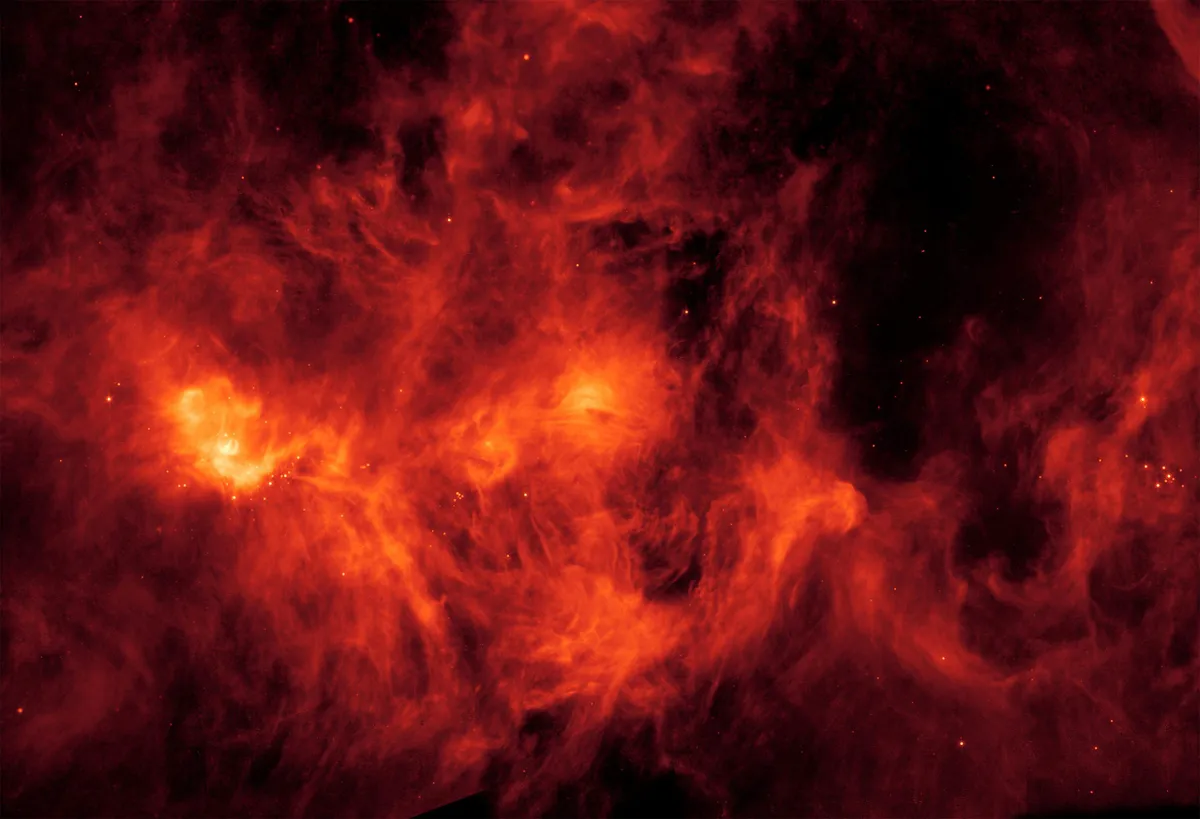
Near the left foot of the constellation of Perseus, the 500 lightyear-wide Perseus Molecular Cloud is an enigmatic region of the sky. Containing over 10,000 solar masses of gas and dust but emitting little visible light, the objects in this immense cloud are stunningly revealed in these infrared images from NASA’s Spitzer Space Telescope.
Recently released, the image was actually captured during the telescope’s initial ‘cold phase’, from launch in 2003 until 2009, before its supply of liquid helium coolant ran out.
One of the nearest active sites of star formation within the solar neighbourhood at only 850 lightyears away, one of the Perseus Molecular Cloud’s main features is the swirling 400-star cluster IC348 on the left of this image.
Spitzer retired in January 2020 after 16 years of groundbreaking infrared observations of the Universe.
Vital stats
Observatory Spitzer Space Telescope
Release date 19 December 2019
Image credit NASA/JPL-Caltech
